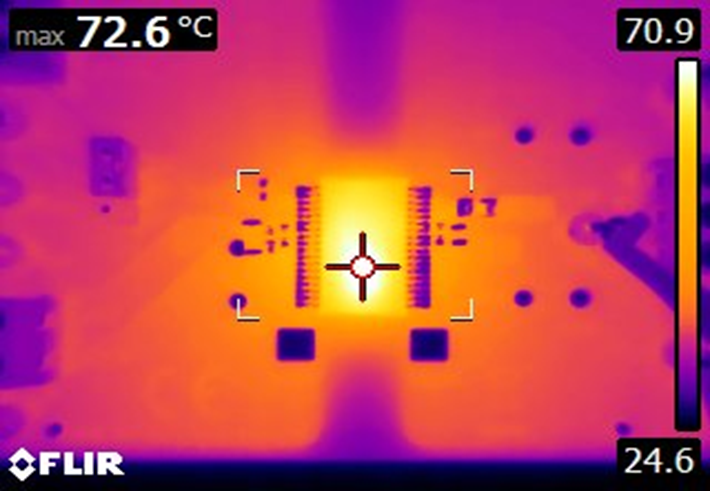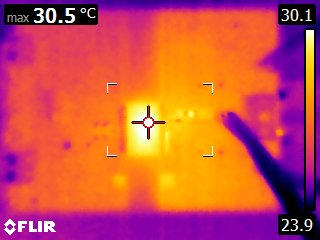SLUUCU2A March 2023 – September 2023
5.10 Thermal Performance
As shown in Figure 5-23, full load EVM operation can result in very hot U1 package temperature. Use caution not to touch the U1 case when probing or handling the EVM during full load operation.

| VIN = 12 V | VDD = 12 V | IVDD = 128.5 mA |
| V+5V = 5.01 V | I+5V = 0 mA | POUT = 1.54 W |
| TRISE = 48°C (see Equation 1) | ||
 Figure 5-24 Power Dissipation and Case Temperature vs Input Voltage, TA=24.6°C, 1.54 W
Figure 5-24 Power Dissipation and Case Temperature vs Input Voltage, TA=24.6°C, 1.54 WEquation 1.

| VIN = 12 V | VDD = 12 V | IVDD = 0 mA |
| V+5V = 5.01 V | I+5V = 0 mA | POUT = 0 W |
| TRISE = 6.6 °C (see Equation 2) | ||
 Figure 5-26 Power Dissipation and Case Temperature vs Input Voltage, TA=23.9°C, 0 W
Figure 5-26 Power Dissipation and Case Temperature vs Input Voltage, TA=23.9°C, 0 WEquation 2.